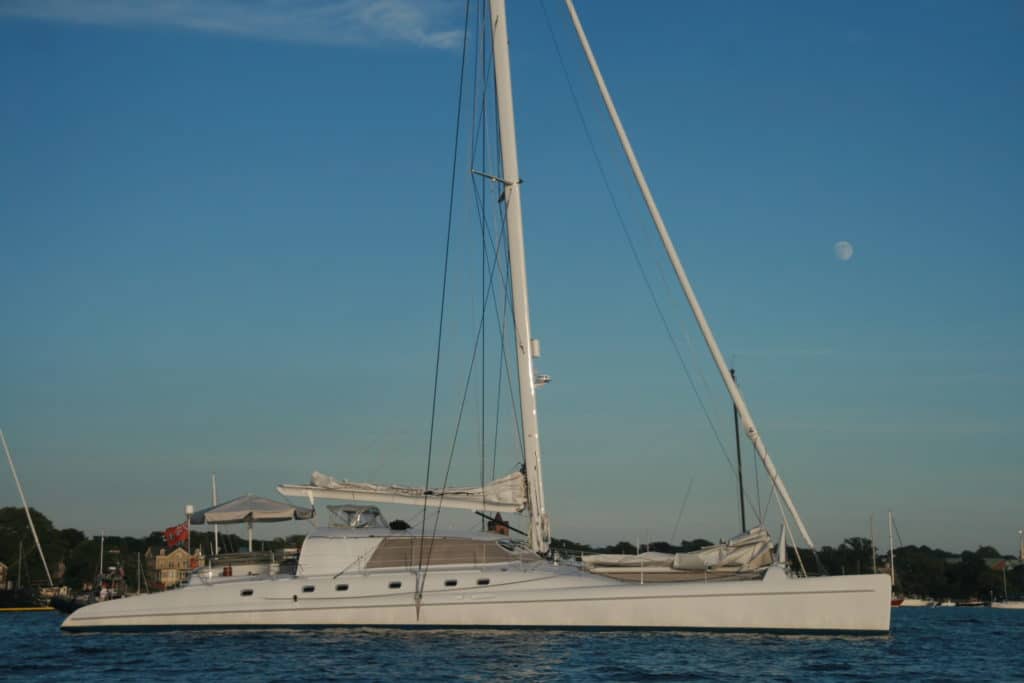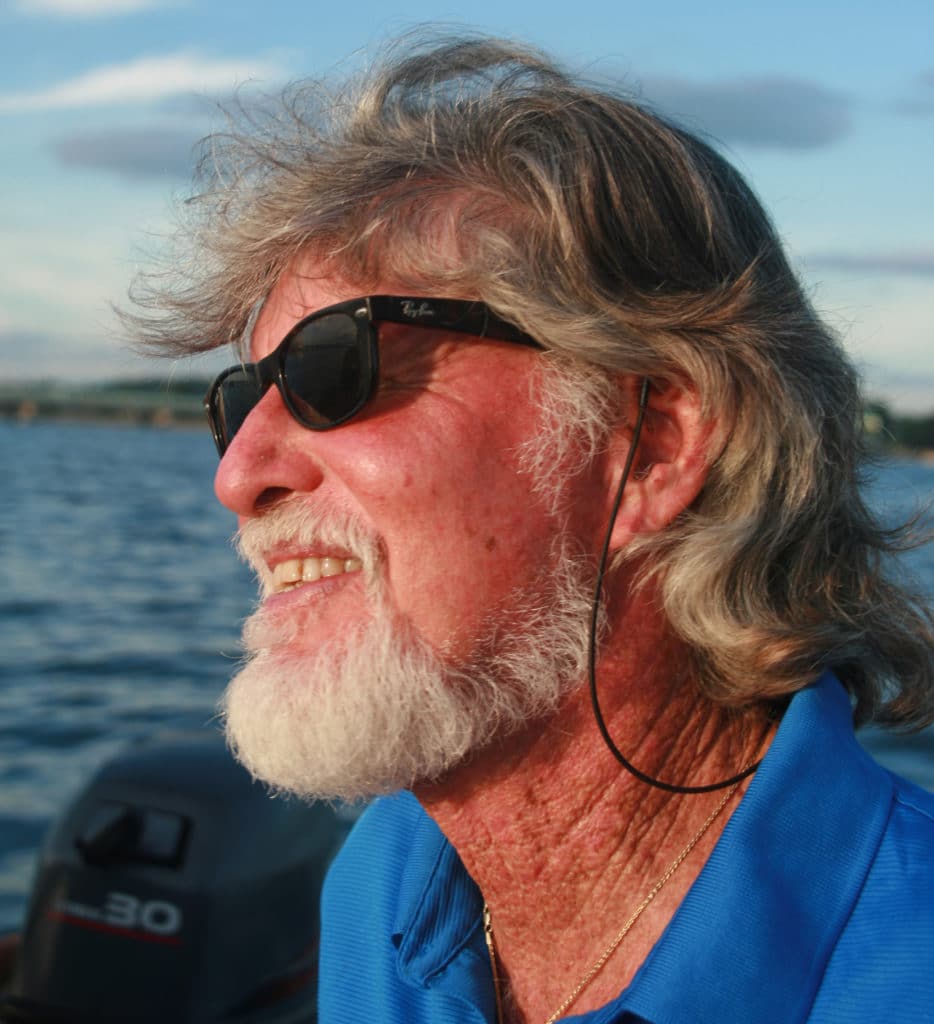
My first encounter with D. Randy West was in Plymouth, England, at the start of the 1984 Observer Singlehanded Transatlantic Race. I was there as a fledgling yachting writer to cover the event. He was servicing a winch on one of the few American entries in the race, Hugh McCoy’s blistering-fast 60-foot catamaran, Fury, which he’d just helped deliver across the pond. He looked precisely like the Floridian surfer dude he was, and his ceaseless observations about, well, whatever popped into his mind at any given moment, could not have been more engaging or entertaining. We became fast friends.
My most recent convening with the wild Mr. West — known in some Caribbean circles, where he’s spent much of the past three decades, as the real-life Capt. Ron — was here in Newport, Rhode Island, last August. Still a highly regarded professional sailor who really knows his way around multihulls, he was in town helping refit his friend John Winter’s 80-foot catamaran, Fat Cat, with a new carbon rig, among other projects. As he ferried me out to the boat in a dinghy for an afternoon sail, I asked if he’d applied his sunscreen.
Of course, he said, then pointed at his salty mug and noted: “But this isn’t tan. It’s patina.”
Yippee, I thought — another day with Randy.
“Six degrees of separation,” according to Wikipedia, “is the theory that everyone and everything is six or fewer steps away, by way of introduction, from any other person in the world.” I’ve long considered that, in the sailing world, it’s more like two degrees of separation. If you’ve met Randy, however, it’s more like one degree; he seems to know literally everyone, from Jimmy Buffett to America’s Cup skippers to just about every islander in the West Indies, the accents of whom he can assume on command.
Heck, as I shook hands with John, who I thought I was meeting for the first time, we suddenly remembered we’d actually done some yacht racing together in St. Maarten a few years earlier. And who’d introduced us? It rhymes with “dandy.”
For heaven’s sake, with Randy, it’s not just people that fall within his realm of connectivity, but boats too. For instance, the first time he laid eyes on Fat Cat, he thought, “I know that boat!”
It turned out that John’s cat had originally been built in San Diego using the exact same molds originally cast for — wait for it — Fury, the ex-OSTAR racer. “Designed by Paul Lindenberg,” said Randy. “It had those elliptical hulls that were the cat’s meow back in those days. They were meant to go through the seas, not over them. Which was great for everybody. Except the driver.”

In any event, the high-performance Fat Cat has gone through three major overhauls since her launch in the late 1980s: first as a 65-footer, then as a 74-footer, and most recently as an 80-footer. “A Hobie Cat on steroids,” said John. Though she also has a very comfortable cruising interior. “What you’ve really got, John, is a very fast house,” said Randy.
With the afternoon sea breeze wafting up Narragansett Bay, and with her new inventory of Doyle sails, including a massive, square-topped carbon mainsail, it was time to take the house for a spin around the neighborhood.
Good golly, you can’t have much more fun on the water than by driving a big cat with great sails and terrific sailors. It does mean recalibrating your monohull mindset. Fat Cat is literally a breeze-making machine, which means it creates a lot of apparent wind through its sheer speed through the water. Once I was behind the wheel, at first reading the wind angles on the instruments was mildly confusing. We were sailing closehauled upwind at 50 degrees apparent, but the true-wind angle was actually aft of the beam, at 110 degrees. What?! Plus, when I glanced around, it seemed as if we were barely moving, the ride was so glidingly sweet and mellow. Then I checked the speedo and was shocked to see we were making 12 knots to weather — in 12 knots of wind. Whoa.
“There’s a lot to be said for narrow hulls,” said Randy. Yep.
We executed the first part of the plan, beating out of the bay into Rhode Island Sound, with aplomb. Part 2 didn’t go so well, as the breeze completely fizzled out, and we never did get a chance at the ripsnorting reach back to the anchorage under the massive screacher. Like, bummer, man. But Randy saw it differently. With the Yanmars kicked over, the fridge would get a nice charge. “And the French wine in there will be that much colder,” he said.
With Randy, even when the wind dies, the breeze is always on.
Herb McCormick is CW’s executive editor.








